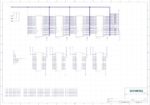High-speed signals enable electronic systems by using memory interfaces, SerDes channels, data center backplanes and connectivity in automobiles. Challenges arise from signal distortions like inter-symbol interference, channel loss and dispersion effects. Multi-gigabit data transfer rates in High-Bandwidth Memory… Read More
Tag: spice
Circuit Simulation Update from Empyrean at #61DAC
A familiar face in EDA, Greg Lebsack met with me in the Empyrean booth at DAC this year on opening day to provide an update on what’s new. I first met Greg when he was at Tanner EDA, then Mentor and Siemens EDA, so he really knows our industry quite well. The company was a Silver level sponsor of DAC this year, and Empyrean offers tools for… Read More
Scientific Analog XMODEL #61DAC
Transistor-level circuit designers have long used SPICE for circuit simulation, mostly because it is silicon accurate and helps them to predict the function, timing, power, waveforms, slopes and delays in a cell before fabrication. RTL designers use digital simulators that have a huge capacity but are lacking analog modeling.… Read More
Afraid of mesh-based clock topologies? You should be
Digital logic chips synchronize all logic operations by using a clock signal connected to flip-flops or latches, and the clock is distributed across the entire chip. The ultimate goal is to have a clock signal that arrives at the exact same moment in time at all clocked elements. If the clock arrives too early or too late from the PLL… Read More
AI and SPICE Circuit Simulation Applications
Can you name the EDA vendor that first used AI starting 15 years ago for circuit designers using SPICE simulators? I can remember that vendor, it was Solido, now part of Siemens EDA, and I just read their 8 page paper on how they look at the various levels of AI being used in EDA to help IC designers work smarter and faster than using manual… Read More
Webinar: Enhance Productivity with Machine Learning in the Analog Front-End Design Flow
Analog IC designers can spend way too much time and effort re-using old, familiar, manual iteration methods for circuit design, just because that’s the way it’s always been done. Circuit optimization is an EDA approach that can automatically size all the transistors in a cell, by running SPICE simulations across… Read More
Why Use PADS Professional Premium for Electronic Design
My IC design career started just a few years before PADS got started in 1985 with a DOS-based tool for PCB design. A lot has changed since then, as PADS was acquired by Mentor Graphics in 2001, and continued to grow under Siemens EDA, now with four versions to choose from, where the top version is called PADS Professional Premium:
- PADS
WEBINAR: Challenges in analyzing High Performance clocks at 7nm and below process nodes
Proper clock functionality and performance are essential for SoC operation. Static timing analysis (STA) tools have served well for verifying clocks, yet with new advanced process nodes, lower operating voltages, higher clock speeds and higher reliability requirements, STA tools alone can’t perform the kinds of analysis… Read More
Synopsys Debuts Major New Analog Simulation Capabilities
Just prior to this year’s Synopsys User Group (SNUG) meeting, I had a call with Hany Elhak, Group Director of Product Management and Marketing at Synopsys, to talk about their latest announcements for analog simulation. Synopsys usually has big things to talk about each year around this time – this year is no exception. Hany… Read More
How About a Faster Fast SPICE? Much Faster!
When Analog FastSPICE was first introduced in 2006 it changed the landscape for high performance SPICE simulation. During the last 14 years it has been used widely to verify advanced nanometer designs. Of course, since then the most advanced designs have progressed significantly, making verification even more difficult. Just… Read More











